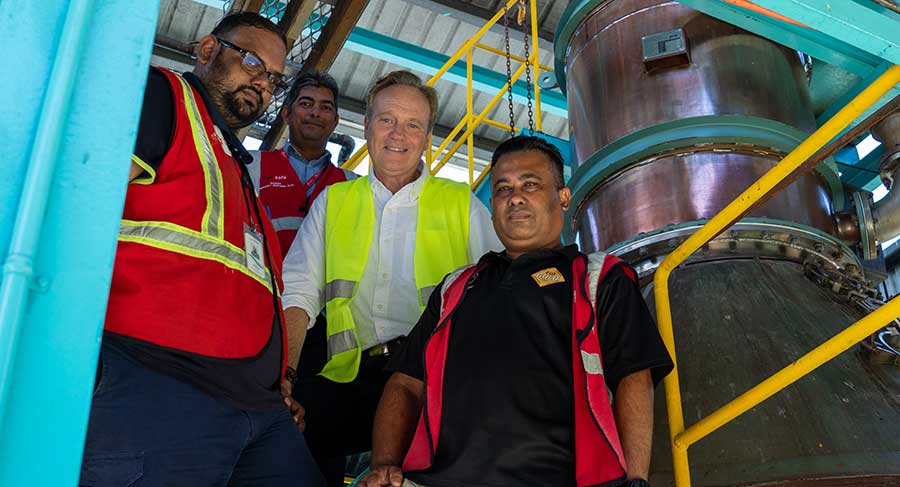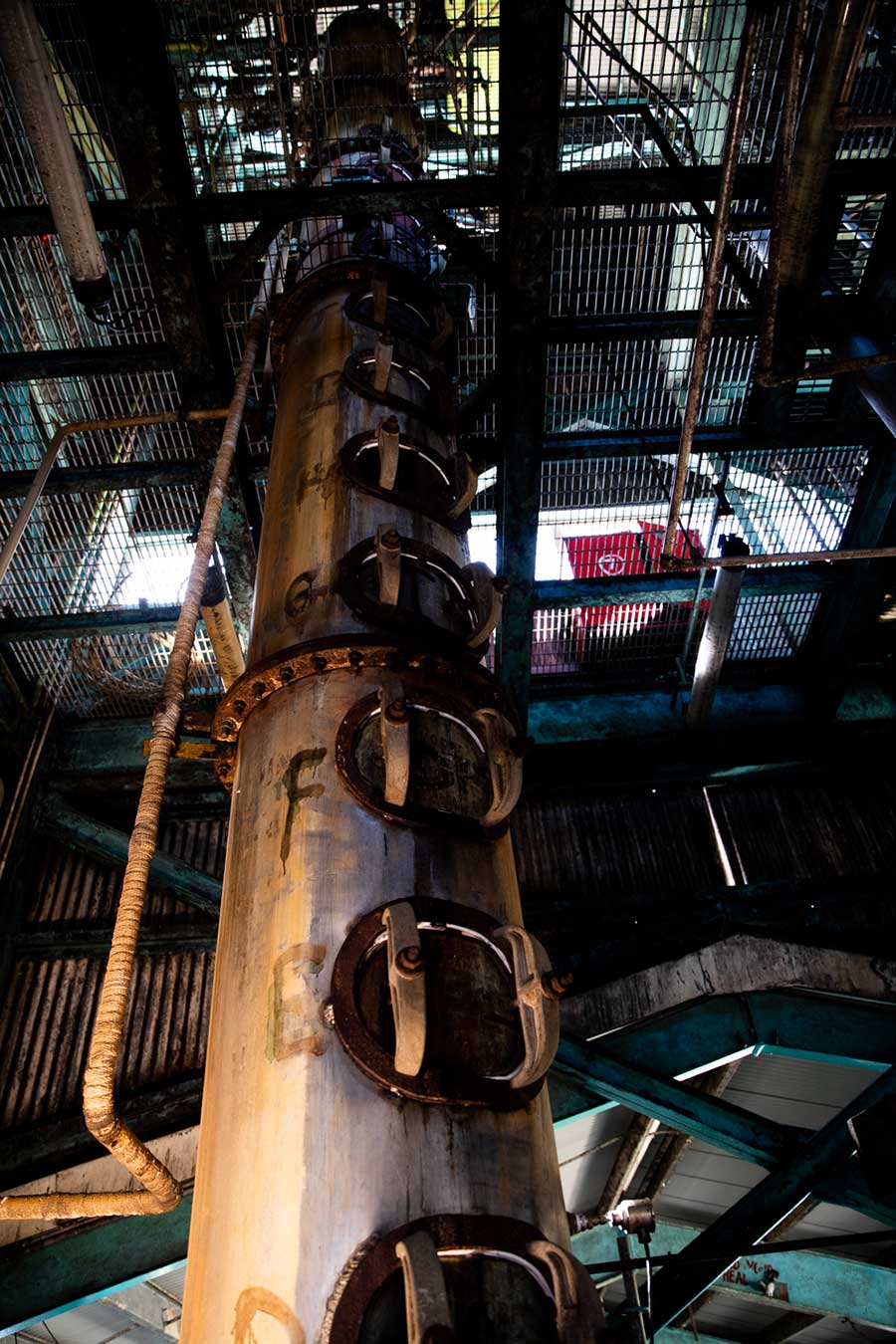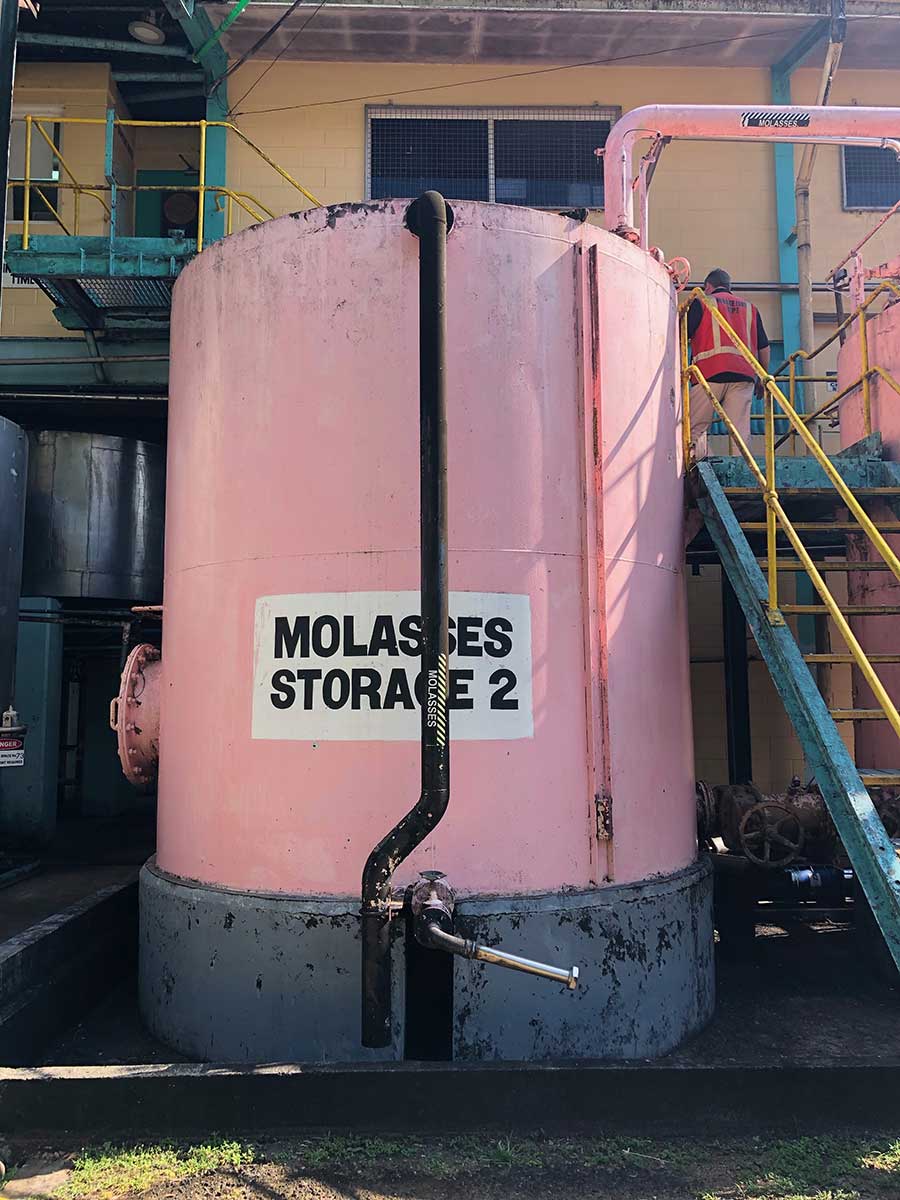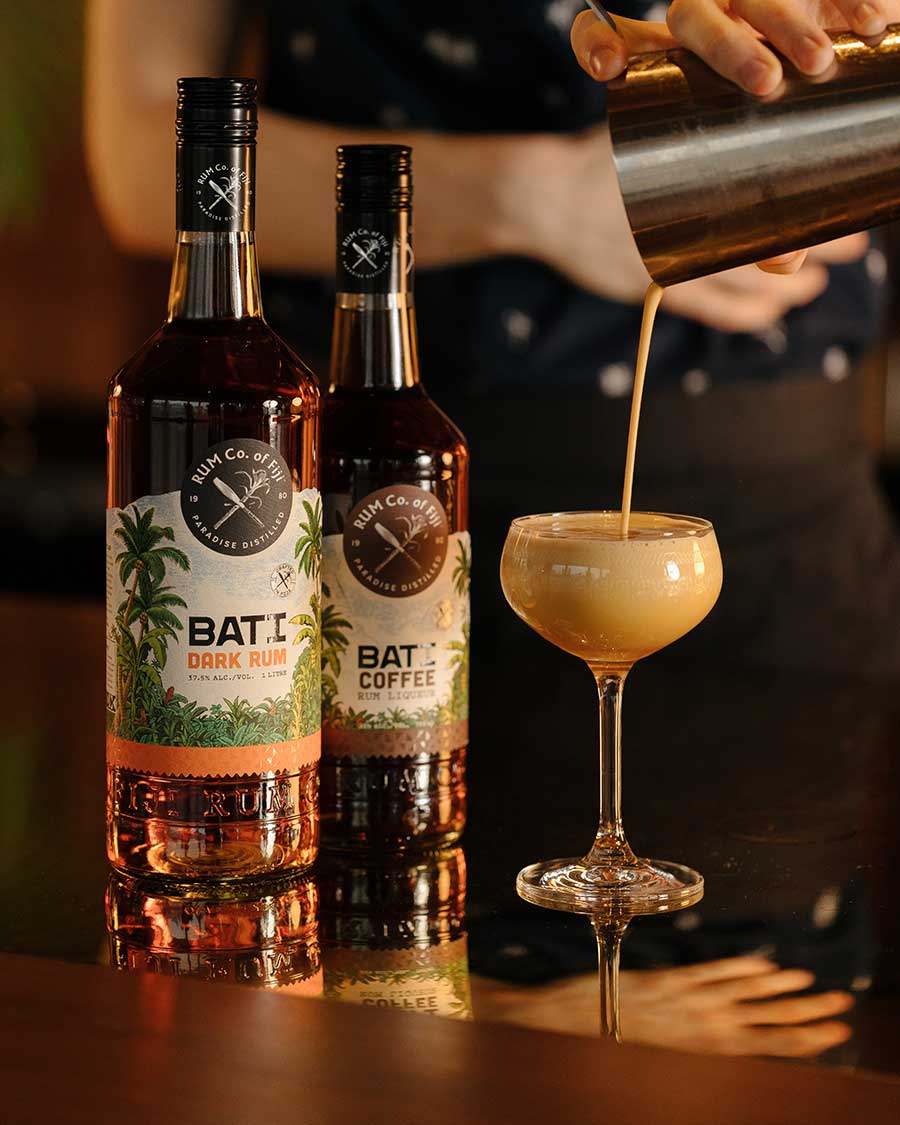Fiji’s rums leave no one indifferent. Highly aromatic, complex and refined, they have been a favourite of independent bottlers for many years, with a number of vintages that have left their mark. However, since Maison Ferrand forged a partnership with the country’s leading distillery, SPD, Fijian rum has become increasingly synonymous with Planteray.
The brand headed by Alexandre Gabriel is successfully multiplying its Fijian cuvées, from its emblematic Isle of Fiji to the recent, highly successful 2004 finished in umeshu casks. Even though this group of 333 islands now has a second distillery.
Sugar cane is thought to have originated in the islands of the South Pacific. In any case, it was present in Fiji when the first Europeans set foot there. Abel Tasman, a Dutch explorer, was the first European to “discover” Fiji in 1643. He was followed by James Cook in 1774.
But it was not until the 19th century that Europeans (in this case the British) colonised this archipelago lost in the middle of the Pacific (744 km west-north-west of Tonga, 788 km south-west of Wallis and Futuna and 1,067 km south of Tuvalu). The Fijians, who had already been around for at least two millennia, grew sugar cane to chew it and we know that they used the juice to sweeten food.
When cotton production in the United States collapsed during the Civil War in the early 1860s, world markets opened up to new producers. Prospects for cotton growing in Fiji looked promising, but Fiji’s cotton business began to decline at the end of the American Civil War and plantations began to recover.
Ratu Cakobau (1817-1883, first king of the Fiji Islands), and then the British colonisers relied on sugar. With one exception, the first sugar developments took place in the wettest areas of Fiji, stretching from Suva to Levuka. The first planters mistook the general lushness of the wetlands for fertility.
Their aim was above all to produce abundant harvests and they did not take sufficient account of the importance of sunlight for the production of sugar by the plant. Poor drainage was also a problem in some areas. For these reasons, many of the first sugar companies were short-lived.
The history of sugar in Fiji
1862 : The first sugar produced in Fiji is manufactured on the island of Wakaya by Mr David Whippy.
1870 : Sugar supplanted copra as the country’s main export, a position it has held to this day. The sugar industry was stimulated by Ratu Cakobau, who was concerned about the decline of the Fijian economy due to internal conflicts and the failure of cotton cultivation.
1871: Ratu Cakobau offers £500 for the ‘first and best’ harvest of 20 tonnes of sugar produced from locally grown sugar cane.
1872: Brewer and Joske build a small experimental sugar factory in Suva, followed by a larger one a year later. Around 640 acres of sugar cane were planted on the site now largely occupied by the town of Suva.
1879: The British government brought indentured labourers from India to work on the cotton, coffee, sugar and other plantations. Most stayed on when sugar became the main crop and more and more Indians came to Fiji until the end of the indentured labour system in 1916.
1880: The Colonial Sugar Refining Company, a well-established Australian company, moved to Fiji in 1880, bringing more resources and experience than the previous contractor. The first CSR (Colonial Sugar Refining Company) factory began operating in Nausori in 1882. Over the next few years, four other factories were set up.
1886: CSR’s Rarawai mill is set up on the banks of the Ba Riv.
1894: Creation of the Labasa mill in the Grand Pays
1903: CSR’s largest mill begins grinding at Lautoka.
1916: Plantation workers become very scarce. To solve the labour problem, several schemes were tried out before the smallholder system was introduced. Indian farmers were set up on farms averaging 4.05 hectares, with the farmer and his family doing most of the work.
1926: The Penang factory, founded by the two Wilmer brothers in Rakiraki in 1881, is bought by CSR from the Melbourne State Company.
1961: CSR Company Ltd sets up a subsidiary in Fiji, South Pacific Sugar Mills Ltd (SPSM).
1972 : The Fiji Sugar Corporation is incorporated in Fiji by an Act of Parliament in 1972 to take over the milling business from 1st April 1973.
31 March 1973: Shares in SPSM Ltd are offered to the people of Fiji and only a small number of shares (2%) are purchased by the public. Following a decision by Lord Denning on profit sharing with growers, deemed unacceptable, CSR ltd withdrew from the Fijian sugar industry. The government bought out CSR’s stake in the company for $10 million.
In order to strengthen the sugar industry’s related activities, the government created the Fiji Sugar Corporation (FSC), which came into being on 1 April 1973. FSC, a public company 68% owned by the government, owns the existing sugar factories. In 1976, the government established the Fiji Sugar Marketing Company Limited (FSM) to market Fijian sugar. Over the course of the industry’s development, some 35 sugar factories were established, but after the sugar crises of the 20th and early 21st centuries, only four remain today.

Growing sugar cane
Fiji today has 333 islands, around a third of which are inhabited, but most of the sugar cane plantations are on the two largest islands: Viti Levu (which is also home to the capital Suva and almost three-quarters of the population) and Vanua Levu. Most of the sugar cane varieties used in Fiji are endemic (Aiwa, Bega, Ragnar, Kaba, Kiuva, Ga, LF91-1925…), but Mana is the most dominant and hardy variety.
Sugar cane is grown mainly by farmers of Indian origin, descendants of agricultural workers brought to Fiji between 1879 and 1919. Sugar cane production is almost entirely rain-fed, and yields are subject to wide annual fluctuations depending on weather conditions. Most of the time, harvesting is done by hand.
However, the Fiji Sugar Corporation has been able to help farmers by facilitating harvesting and transport costs. FSC’s field division is responsible for the orderly and efficient harvesting and delivery of sugar cane from the field to the factory. FSC owns and operates all 300 km of rail infrastructure free of charge.
FSC has introduced trucks and mechanical combines to complement its existing fleet of vehicles, such as tractors. In all, some thirty tractors and additional tools have been distributed to FSC field sectors nationwide.
The arrival of rum
Fiji’s main and oldest distillery, South Pacific Distilleries Limited (SPD), is located in Lautoka (Fiji’s sugar town), west of Viti Levu, and began operations in 1980. It produces rum on columns and iron stills. SPD also produces vodka and blends gin and whisky.
The first rum brand produced was Bounty. In 1982-1983, Bounty OP (58% ABV) received its first gold medal, and Bounty White a silver medal at the IWSC in London. The Fosters Group acquired SPD from the Fiji Sugar Corporation in 1998, and it is now owned by Coca-Cola Europacific Partners.

SPD’s rum production
The rums are made using Fijian molasses from the neighbouring Fiji Sugar Corporation. Fermentation takes place in two stages: a 9-hour dry yeast activation phase, followed by 72 hours of fermentation.
Two types of distillation are used: discontinuous distillation using repasse stills (the rum comes out at 84%), and continuous column distillation, which produces rum with an alcohol content of 95%, or neutral alcohol at 96%.
The white rum is distilled using a column still, adjusted to the desired alcohol by volume (ABV) using pure water from this volcanic island, before being filled into American oak vats for the required ageing period. The rum is then filtered through coconut shell charcoal.
The dark rum is distilled using column stills and pot stills, then adjusted to the desired ABV, before being filled into single-use, ex-bourbon casks and aged. Fiji’s unique tropical climate plays an important role in the ageing process, allowing the rums to develop complex aromas and characters up to three times faster than ageing in colder climates.
Throughout the ageing process, the rums are tasted by the trained tasting panel. The final part of the process, before bottling, is the blending, which is supervised by our experienced master blenders.
Fijian rums
The main brands produced at SPD are Bounty OP, Bounty White and the Rum Co of Fiji range, which includes Bati and Ratu rums. The Bati range consists of three rums and four rum liqueurs, and the Ratu range (5-10 years old) consists of three rums and a 35% rum liqueur.
Limited edition rums are also produced in small batches. This includes the Lautoka 16 year old rum. Bottled rums can be easily found in Australia and New Zealand, with small quantities available in Germany, Austria, the Czech Republic and Switzerland.
SPD has teamed up with Planteray to produce rums that are the honey of aromatic rum lovers, including Planteray Isle of Fiji, a tribute to Fiji’s terroir that has been acclaimed in numerous international competitions, winning a gold medal at this year’s Rum and Cachaça Masters 2025.
But they also collaborate on the creation of unique limited editions, such as the Planteray Fiji Islands 2004 Single Cask, finished in a Japanese Umeshu cask – an exotic and elegant expression that beautifully fuses the two traditions. SPD rums have won nearly 250 medals in international spirits competitions.
Read also :
Interview – Paul Clark, CEO of The Distillery Co of Fiji
A tasting with Planteray and the 1802 bar



